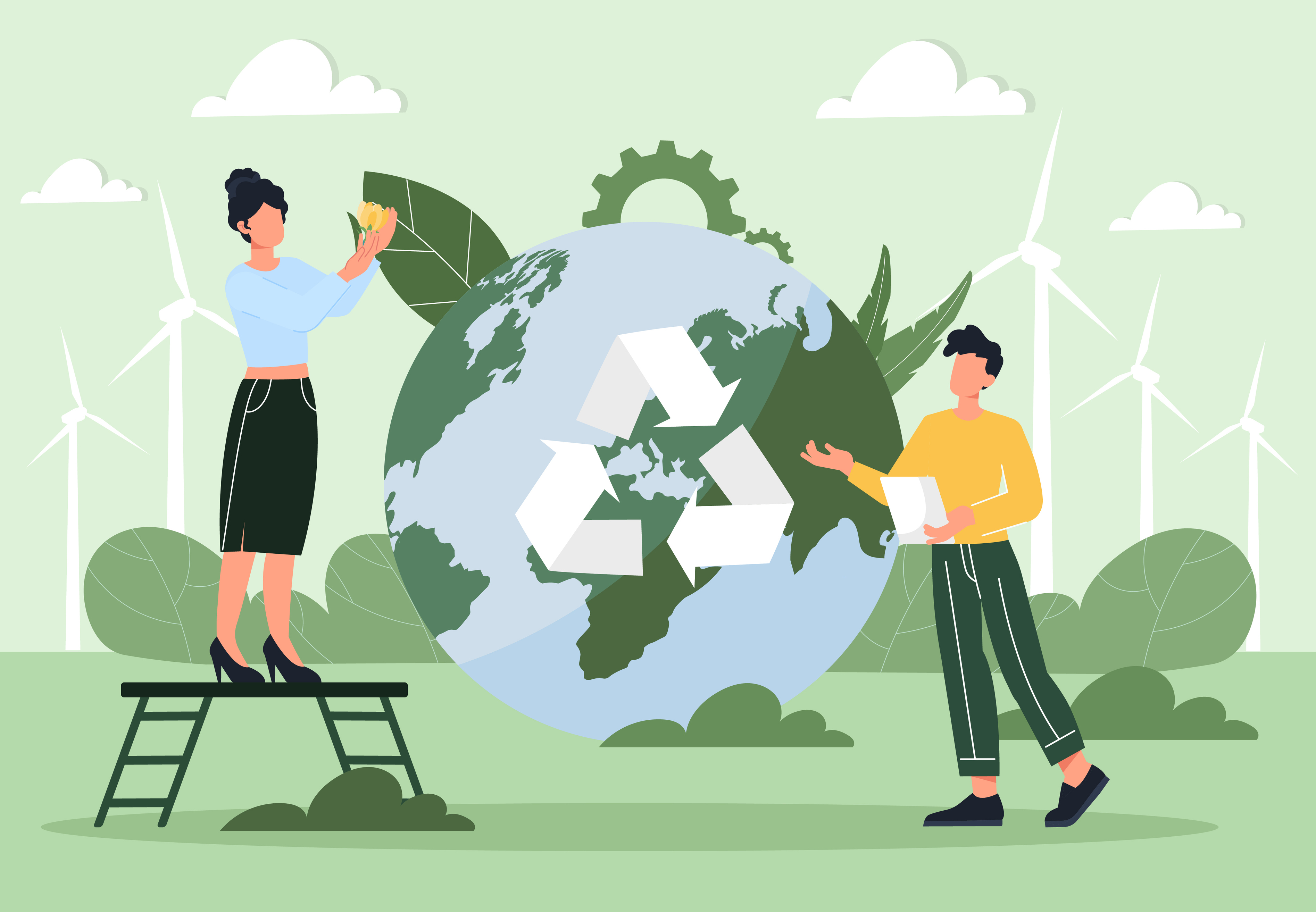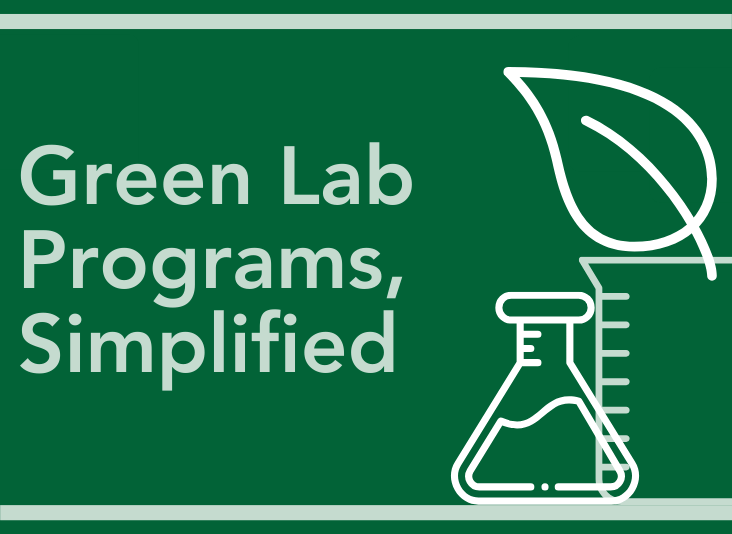4 Great Reasons to Donate Non-Hazardous Waste with Nonprofits
Is your business committed to sustainability, creating a circular economy, or some similar green initiative? If so, the donation of unwanted inventory to local nonprofits can be an excellent way to enrich any such green program.
Unfortunately, despite management’s best efforts, during day-to-day operations, it can sometimes seem impossible to fully implement a green program. That’s where donation comes in: It’s an excellent way to handle the perennial problem of disposing of medical, industrial, or other types of waste—including single-use plastics, needles, gloves, etc.
This method usefully repurposes unused stock that otherwise would end up in a landfill, a total waste. Donation of non-hazardous waste materials can offset waste reduction program shortcomings in amazing ways—as well as support business resilience and adaptability.
Green Waste Disposal Challenges
Waste reduction is a major component of all environmental management systems, platforms, and programs. This includes both upstream and downstream waste management. As it also goes hand in hand with sustainability programs, proactive waste generator managers want to reduce potential waste on the front end. If possible, they do this right at the procurement phase, while simultaneously determining sustainable disposal strategies.
For many procurement and operational managers, implementing such a holistic program is often a complex undertaking. This is because all businesses face market and production cycle unpredictability. Without being able to accurately predict every industry dip and spike, organizations must buy based on the best market estimates. So, they will, at times, procure too much of any essential item, including gloves or other personal protective equipment (PPE).
Then when these items go unused or face expiration, managers slate them for:
- Landfilling—which is typically the least environmentally friendly waste disposal method
- Incineration—this can, in the wrong system, generate air pollution
- Other costly or high-effort treatment programs
More and more companies, however, have the chance to break the cycle of waste with a minimum of effort—via nonprofit collaboration. This method allows organizations to do well for themselves—while also doing their communities and the environment overall considerable good.
Worthy Recipients of Non-Hazardous Waste
Who or what can benefit from diversion? Any good cause can. Many nonprofits are in dire need of specific items that usually are considered too niche for donation, like the gloves and PPE (discussed above), and that are headed to the landfill.
Among any business’ local (or even, sometimes, geographically remote) candidates include:
- Soup kitchens
- Health clinics
- Wildlife rehabilitation centers
- Animal shelters
- Riverkeepers
- Veterinary clinics
That’s just a few. Perhaps you know of a worthy cause? You can include any organization with workers who perform technical work, or require protection, niche items, and plastics for their operations.
What's in it for You?
Managers may wonder how donation really benefits their business—and not just the nonprofit they assist. By making the generous green move to donate your unwanted and non-hazardous materials, your organization can:
- Maintain efficient waste disposal processes through boom-and-bust business cycles
- Receive a variety of substantial tax benefits
- Invest in the local community
- Promote regional nonprofit healthcare, R&D, educational, and other organizations
- Improve image and brand
- Get greater ROI on materials investments
- Reach waste reduction and recycling goals, such as ISO 14001 certification
Let’s dig a bit further into this.
Four Major Donation Benefit Areas
One: Financial return on investment (ROI). Besides directly cutting operational and disposal costs, there are tax-related and other bottom-line incentives for nonprofit donations. In some districts, companies may be eligible for direct tax deductions—or to receive credits based on the value of any donated goods. Aware of this, many nonprofits have programs to assist their partners with getting their proper credits.
The recipients often provide documentation—such as donation receipts or certificates—that acknowledges the contribution. This documentation serves as evidence of charitable giving. It also helps businesses in complying with accounting and regulatory requirements—even aiding in tax reporting, and the demonstration of responsibility efforts. It also serves to officially verify a business is fulfilling its green commitments.
Two: Improvement to the quality of life in the local community. Donating items to local nonprofits directly contributes to the welfare of your surrounding community—which is often the place you do business in. These donations often provide essential resources to underserved populations. They support programs that promote education, healthcare, or other critical community needs. Such generosity can uplift local communities by placing perfectly sound items (that can’t be recycled by normal methods) into the hands of people who need—and can use them.
Three: Brand enhancement. Doing the right thing is also often a good business decision. Right actions can indirectly, but ultimately, contribute to the bottom line. This results in more than just feeling nice: Research compiled over the past decade proves it. Many consumers have expressed a preference to buy from organizations that put sustainability ahead, as this blog has noted.
According to a 2021 “MIT Sloan Management Review” article, research indicates corporate donations pull customers in. A 2018 survey by media firm Mintel demonstrated:
- When making purchases, 73% of United States consumers factor in companies’ charitable work
- Half of the respondents would switch to a company that supports a cause they believe in
Four: Improved employee morale, retention, and productivity. Don’t forget, your employees are often environmentally committed—especially the younger ones. In fact, an American Charities report claims 70% of employees say it is imperative or very important to work for an employer whose mission and values align with theirs. Additionally, a 2021 Harvard Business School Online article on corporate social responsibility (CSR) noted 95% of employees surveyed believe an organization should benefit all stakeholders—including the communities they do business in.
Share the Good News
To reap the most benefits from green generosity, don’t be shy. Let the community and your employees know all about it. Engaging workers in donation drives or nonprofit volunteer activities can foster a sense of purpose and camaraderie. Participation in such initiatives can also boost employee morale, promote teamwork, and create a positive work culture—one centered around giving back to the community.
And, by all means, publicize participation in these programs! Indeed, many nonprofits will offer free advertising to donors. They do this by mentioning the contributions via social media and their websites. It is, of course, more important to actually implement these donation policies—but for full impact overall, it’s essential the public be aware of the activities. It might inspire others to do likewise.
Real-World Waste Recovery Success
I’ve seen collaboration with nonprofits work with my own eyes. One of my clients decided to seek certification for products sold within the European Union and wanted to adhere to good manufacturing processes (GMP).
So, this client needed to swap out the old inventory for the new higher-standard materials. As the company transitioned to compliance with these new guidelines, volumes of perfectly good supplies (such as nitrile gloves) were made obsolete. (This was only because they adhered to existing American standards but not to the European Union guidelines.)
The client was committed to improving the world—so they wanted to minimize unsustainable waste disposal processes. Luckily, existing inventory items (like nitrile gloves) are in constant demand at a nearby wildlife sanctuary for animal procedures, operations, and examinations. The next day, upon confirmation that the shelter needed these materials, a volunteer transported them.
As a result of this low-effort, yet impactful mission, my client got to discuss the new sustainability outreach at subsequent board meetings—and the environment was spared a not-inconsiderable amount of waste. Employees felt positive about helping the community. And presumably, locals appreciated the company even more for making their area a better place.
Your Partner in Donation
We must all do our part to improve the world—and we can even see some ROI from this minimal effort. When it comes to sustainability and worthy causes, your imagination is your only limit. Knowledge of the sustainability market can inform your waste reduction and disposal choices—and make the best use of your products and materials at the end of their operational life in your facility.
Here at Triumvirate Environmental, we’re committed to sustainability—diverting waste from the landfill or other, less green destinations. Our extensive menu of sustainable waste disposal options will help you find the best strategy. We also offer extensive consulting experience and industry know-how for organizations of all types looking to improve operational environmentalism.
Talk to us today about how we can help you.






